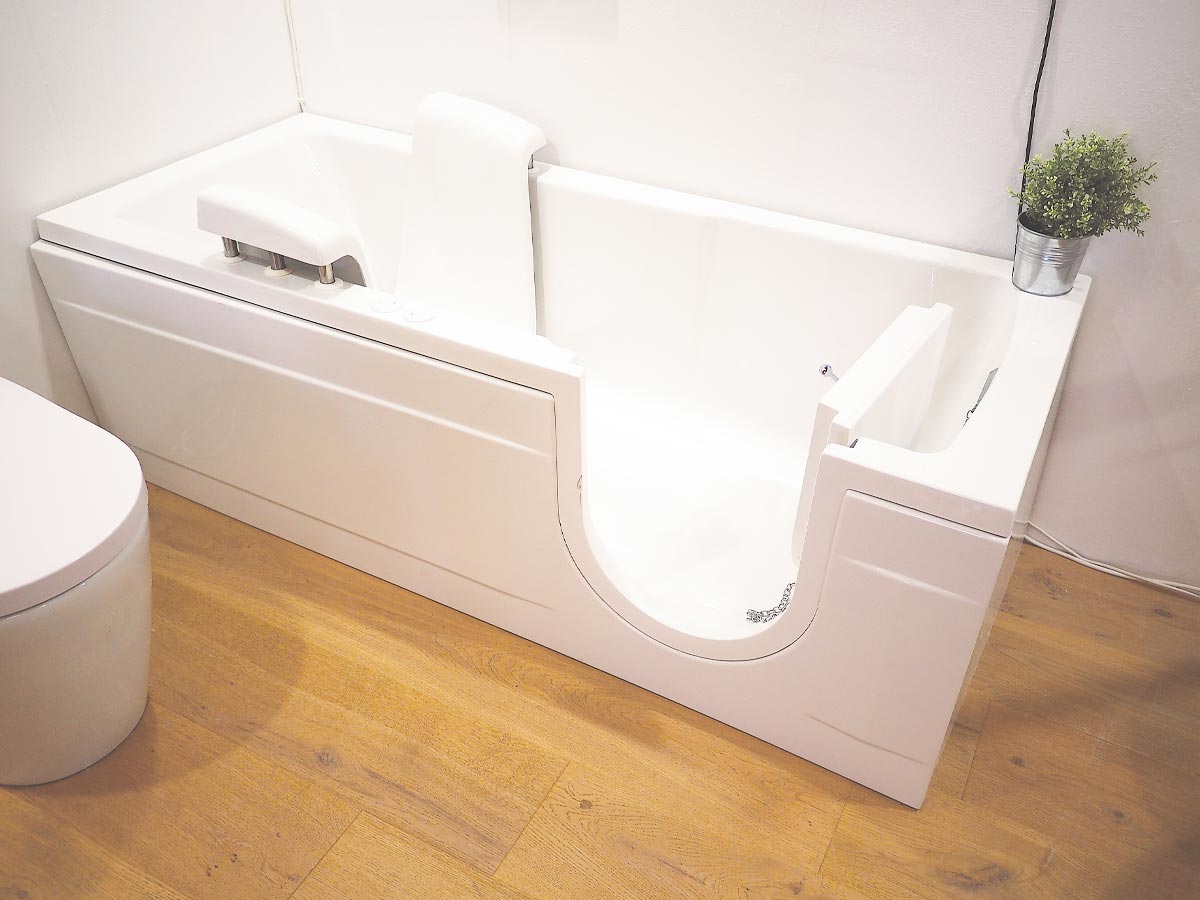By JIM MILLER
(SAVVY SENIOR) A walk-in bathtub is a good option for mobility challenged seniors because it’s much easier to get into and out of than a standard tub. They also help prevent slips, trips, and falls.
The Basics
Walk-in bathtubs are uniquely designed to have a watertight, hinged door built into the side of the tub, which provides a much lower threshold to step over (usually 2.5 to 7 inches) versus the standard, 15-inch tub.
In addition most walk-in tubs also have a built-in seat, grab bars, anti-slip floors, anti-scald valves, and a handheld shower head.
Many higher-end models offer therapeutic spa-like features that are great for seniors with arthritis and other ailments.
The kind of tub you choose will depend on your needs, preferences, and budget, as well as on the size and layout of your bathroom. The current cost of a walk-in tub with professional installation ranges anywhere from $3,000 to $10,000. Here are some other things you’ll need to consider, to help you make a good choice.
Tub Size
Walk-in bathtubs vary in size. Most models have high walls, between 3 and 4 feet high and between 28 and 32 inches wide, but will fit into the same 60-inch long space as your standard tub without having to reconfigure the room. Bariatric walk-in tubs have wider door openings and larger seats, to accommodate people over 300 pounds.
Wheelchair-Accessible
Most walk-in tubs have an inward opening door, but if you use a wheelchair, an outward opening door may be a better option.
Tub Options
The most basic and least expensive type of walk-in tub you can get is a simple soaker tub. But depending on your preferences, you have many other options, like an aero therapy (air jets) tub, hydrotherapy (whirlpool water jets) tub, aromatherapy tub that mixes fragrant essential oils with the water, or a combination tub that has multiple features. Also, look for tubs that have an in-line heating system, to keep your bathwater warm while you soak.
Fast fill and drain
One drawback to using a walk-in bathtub is that the bather must sit in the tub as it fills and drains, which can make for a chilly experience. To help with this, consider a tub that has fast-filling faucets and pump-assisted drainage systems, which significantly speed up the process. But these options may require some plumbing modifications to your bathroom.
Easy Cleaning
Keeping the tub clean should be a priority, especially if you get a therapy tub because of the bacteria that can grow in it. Look for a walk-in bathtub with a self-cleaning system.
Warranty
The best walk-in bathtubs on the market today are made in the United States. Make sure the company you choose has a lifetime “leak-proof” door seal warranty and lengthy warranties on both the tub and the operating system.
Where to Shop
While many companies make, sell, and install walk-in bathtubs, some of the best in the industry are American Standard, Safe Step and Kohler. Most companies offer financing with monthly payment plans.
Unfortunately, original Medicare does not cover walk-in bathtubs, nor do Medicare supplemental (Medigap) policies. Some Medicare Advantage plans may help pay.
Many states also offer Medicaid waivers that will help pay for the purchase and installation of a walk-in bathtub for those who qualify. The VA offers some programs that provide financial aid, too.
To get started, contact a few companies that will send a local dealer to your home to assess your bathroom and give you product options and free estimates. MSN
Send your senior questions to: Savvy Senior, P.O. Box 5443, Norman, OK 73070, or visit SavvySenior.org. Jim Miller is a contributor to the NBC Today show and author of the book The Savvy Senior.











